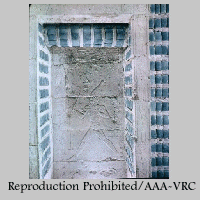
1. False door within tomb at Saqqara showing King Zoser running in a ritual race. Third dynasty. About 2660 B.C. Note faience tiles that imitate rush matting and the roll over the door.

1. False door within tomb at Saqqara showing King Zoser running in a ritual race. Third dynasty. About 2660 B.C. Note faience tiles that imitate rush matting and the roll over the door.
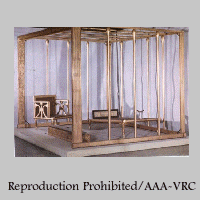
2. Tomb furniture of Hetepheres, Great Queen of Snofu and mother of Khufu. It was found in a chamber at the bottom of a deep shaft close to Khufu's pyramid.
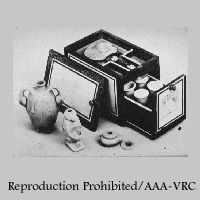
3. Finely made fitted toilet casket (or cosmetic case) with ivory and ebony veneer. Twelfth Dynasty (Middle Kingdom).
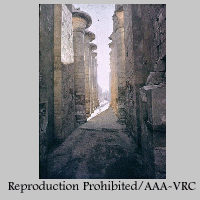
4. The Temple of Amun at Karnak, looking east. About 1250 B.C. Begun by Seti I; finished by his son Ramasess II. Columns 69 ft. high and 11 ft. 9 in. in diameter.
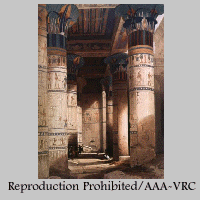
5. Painting of view under the grand portico or the temple of Isis, Philae, Egypt. Painting executed by David Roberts about 1846 to 1850 showing condition and paint colors at that time. This shows the enclosed edge of the Peristyle Court. This is a late temple, but since Egyptian architecture changed little over time, it gives us a good idea of the decoration of earlier temples as well. Ptolemaic Period, 332-330 B.C.
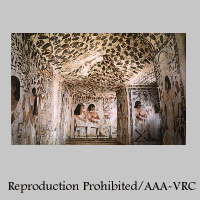
6. Tomb of Sennufer, guardian of the garden of Amun in the time of Amenophlus II. The tomb is located in the Valley of Nobles near Thebes. The ceiling is painted to resemble an arbor loaded with grapes. Wall paintings show Sennufer and his wife and many symbols to ensure a happy, healthful afterlife. We know that murals were used in the fine homes of the day, and, perhaps, they were not too dissimilar from what we see here.
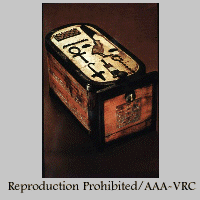
7. Cartouche-shaped box with name of Tutankhamun written on it in hieroglyphic symbols. 1334-1325 B.C.
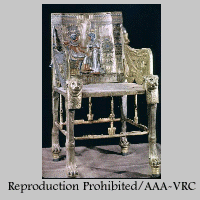
8. Tutankhamun's gilt throne. The back is decorated with a scene which is perhaps ritual but evokes the private life of the royal couple. The other parts of the Throne are decorated with official and religious motives. Wood structure overlain with gold, faience, and semiprecious stones.
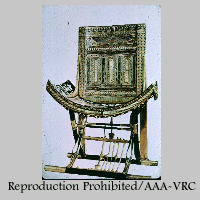
9. Pharaoh's ecclesiastical throne. Remains of the openwork decoration between the feet refer to the "Union of Two Countries." Partially overlaid with gold foil, inlaid with faience, glass, semi-precious stones and panels of ebony and ivory.